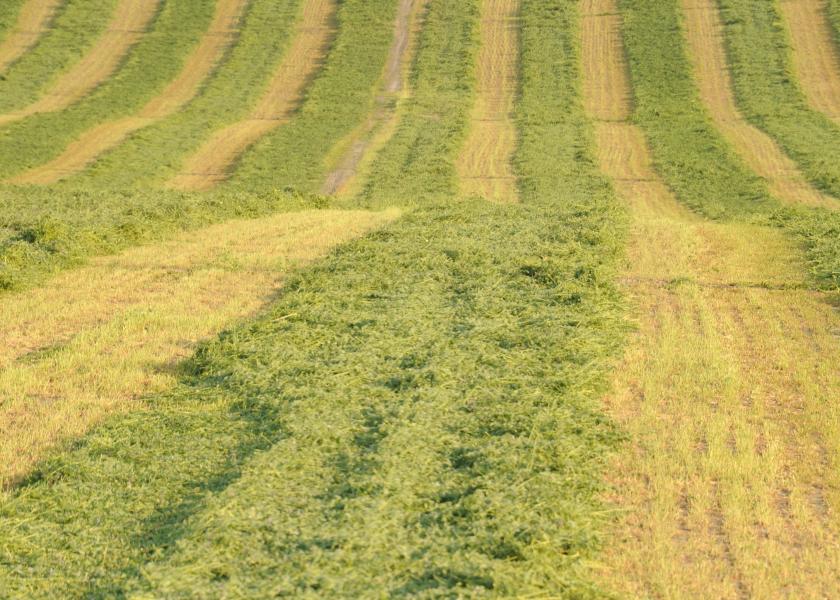Chop Crappy Hay Finer

With the wet spring and delayed forage harvest, many dairy farmers are being forced to put up hay that is less than ideal.
This more fibrous forage can result in lower dry matter intake, lower digestibility, more chewing time and reduced lying time. All of this can result in lower milk production.
One solution is chop mature forages more finely to reduce particle size, suggests Rich Grant, a dairy nutrition specialist with the William H. Miner Agricultural Research Institute in Chazy, N.Y.
His research, along with colleagues Wyatt Smith and Michael Miller, found that finally chopped forage (the research used timothy hay and a Haybuster hammermill) could increase dry matter intake by 5 ½ lb per cow per day. That resulted in 3 lb more milk per cow per day, and nearly 4 lb more milk on an energy-corrected basis.
“I do not want people to over-do the reduction in TMR particle size and cause acidosis problems,” Grant says. “But I think many producers do suffer from feeding mediocre quality forage at too long a chop length and consequently limit feed intake.”
At this point, Grant isn’t making any specific recommendations on adjusting a chopper’s theoretical length of cut (TLC). But if you have higher maturity forage, chopping at a little lower TLC should help intakes.
Reducing the very long particles and getting more consistent particle length are key, he believes. Having more consistent particle size should also aid in more effective packing in the silo, which in turn could enhance fermentation and improve digestibility.
If you have already ensiled poorer quality haylage, running the TMR mixer a bit longer can also reduce forage particle size. Work at Cornell University done 20 years ago shows increasing mixing time from five minutes to 10 can reduce the amount of forage on the top screen of the Penn State shaker box from about 13% down to 8%. How much particle size is reduced depends the type of TMR mixer you have and how well it has been maintained.
When forage quality is a concern, feeding and other management are also critical. Ensure that feed is always in front of cows, don’t over-crowd and maintain comfortable stalls that entice cows to lie down when not eating. “Maintaining dry matter intake is all part of a system,” says Grant.







